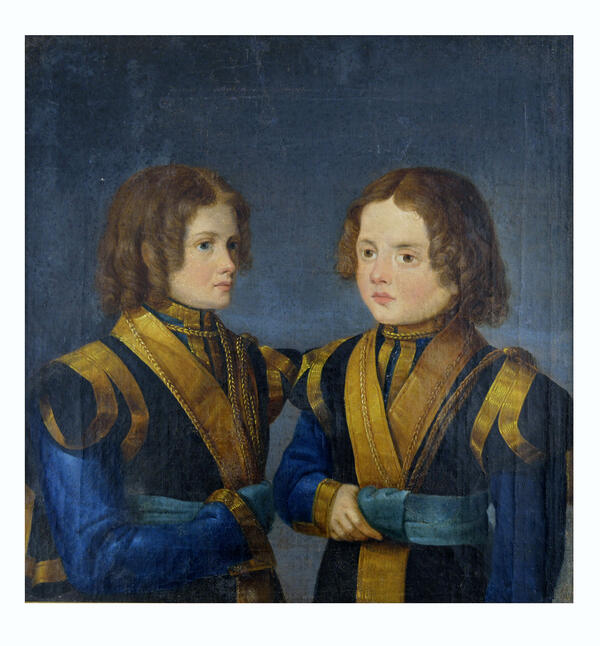The painting “Peasants Singers” entered the Oryol Museum of Local History in 1919.
On the canvas, an unknown author depicted two boys, singers from peasant families: Polikarpov and Zimenko. Both of them were serfs of the landowner Strakhov, house servants. This was the name of the serfs who served in the manor house. Progressive landowners sent talented peasants to study singing, dancing and other arts, so they had their own painters, actors and singers in the estate.
In the second half of the 18th century, the theater became one of the favorite entertainments of the noble society. Aristocrats and even poor landowners spared no expense in organizing home theater performances.
In 1815, Count Sergey Kamensky opened the first public theater in Oryol, and theatrical season began in the fall of the same year. More than 150 actors and musicians served in it. The theater’s repertoire included dramatic performances, opera and ballet. Local opera performances was even compared to those of the imperial theaters.
In the first season, performances at the Kamensky Theater were almost daily. Later, performances were given three times a week. The theater orchestra periodically performed free of charge to the public in the city garden. Kamensky organized two ensembles: instrumental and horn, which performed music on hunting horns. 40 people served in each of them, every musician, according to the decree of Kamensky, were supposed to be in uniform.
The count took part in all the affairs of the theater. He taught the actors, sold tickets at the box office and even delivered them to guests. Spectators from other cities and neighboring governorates came to his theater. Kamensky did not spare money: he regularly replenished the troupe of actors, buying talented serfs, ordered new scenery and costumes.
In the theater, a special box was arranged for the count, and a gallery adjoined it, where the so-called boarders usually sat — courtyard girls who were preparing to become actresses and dancers. A visit to the theater was a must for them. The day after the performance, the count demanded that each recite some monologue or show a dance from the performance.
On the canvas, an unknown author depicted two boys, singers from peasant families: Polikarpov and Zimenko. Both of them were serfs of the landowner Strakhov, house servants. This was the name of the serfs who served in the manor house. Progressive landowners sent talented peasants to study singing, dancing and other arts, so they had their own painters, actors and singers in the estate.
In the second half of the 18th century, the theater became one of the favorite entertainments of the noble society. Aristocrats and even poor landowners spared no expense in organizing home theater performances.
In 1815, Count Sergey Kamensky opened the first public theater in Oryol, and theatrical season began in the fall of the same year. More than 150 actors and musicians served in it. The theater’s repertoire included dramatic performances, opera and ballet. Local opera performances was even compared to those of the imperial theaters.
In the first season, performances at the Kamensky Theater were almost daily. Later, performances were given three times a week. The theater orchestra periodically performed free of charge to the public in the city garden. Kamensky organized two ensembles: instrumental and horn, which performed music on hunting horns. 40 people served in each of them, every musician, according to the decree of Kamensky, were supposed to be in uniform.
The count took part in all the affairs of the theater. He taught the actors, sold tickets at the box office and even delivered them to guests. Spectators from other cities and neighboring governorates came to his theater. Kamensky did not spare money: he regularly replenished the troupe of actors, buying talented serfs, ordered new scenery and costumes.
In the theater, a special box was arranged for the count, and a gallery adjoined it, where the so-called boarders usually sat — courtyard girls who were preparing to become actresses and dancers. A visit to the theater was a must for them. The day after the performance, the count demanded that each recite some monologue or show a dance from the performance.



